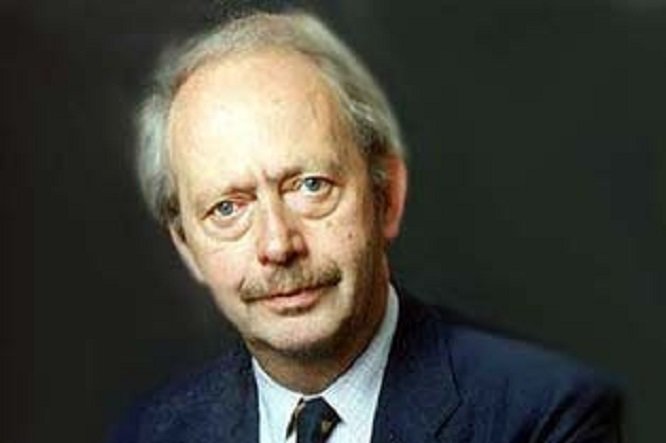The task of the theory of social conflicts is to reveal:
- the characteristic features of the conflicting relationship;
- Typical forms of manifestation of social conflicts.
R. Dahrendorf's main thesis on contemporary social conflict is as follows: Modern social conflict is an antagonism between rights and supply, politics and economics, civil rights and economic growth.
Dahrendorf rejects the scheme: "capitalism - socialism".
The road to freedom is a transition from a closed society to an open society. An open society is not a system but merely a mechanism for studying alternatives.
On the other hand, only minor changes are not enough. Something must be shifting in something. The Dahrendorf approach is a strategic reform, not a system change, not a cosmetic reorganization.
In the "Contemporary Social Conflict," Dahrendorf sets out three important features of civil society:
The first important feature is the variety of its elements. The word structure also shows the order in this diversity. There is an abundance of organizations and institutions where people can realize some volume of their life processes. James Madison, one of the fathers of the American constitution and the authors of Federalist Papers, has emphasized this aspect in particular, as "the tyranny of the majority" has taken care of him.
The second important sign is the autonomy of many organizations and institutions. In addition, autonomy must mean independence from a center of authority.
The third important sign is related to human behavior, that is what Garton Esh calls "polite, tolerant, non-violent", above all, "civic and civilian".
Free, open public systems need three things - political democracy, a market economy and civil society. All three are related, according to Dahrendorf, to the cost of deception.
At the same time, he is aware of the limitations of the neo-conservative model of the 1980s. He is therefore seeking a specific synthesis in "radical liberalism"
Dahrendorf attempts to overcome the failures and disappointment of the Eastern European Revolutions by comparing them with the revolutions of 1789 and 1848. I repeat the well-known sociological scheme of the inexorable logic of the development of every revolution - from tired and constructive to first to extreme and / trends of the second stage.
In this article, R. Dahrendorf reveals essential features of political democracy as a management system:
"Despite the literal meaning of the word democracy, the current democracy is not" the rule of the people, "and the world does not exist. with your own course ...
It is good when the government is placed under control. But soon it becomes clear that if it is not in effect, there will be disappointment, stagnation. There are several ways to give the government power without subjecting democracy to danger. These are the German and the British, on the one hand, and the French and the American, on the other. They are viable, in one case the head of the government has certain constitutional prerogatives - Richtlinien - kompetenz or the right to dissolve parliament, but he is also elected by parliament; In the other case, the president he is elected to his post regardless of parliament and therefore has real power." Only the second and third elections (the so-called "double change") - the double change of different political groups in power - will show whether the new norms and institutes have been rooted - predicted in 1990 Dahrendorf in his famous article " to freedom ".
Habermas criticizes the "normative" (or cultural-ethical) deficit of German unification.
Morris Duverge - Modern Political Regimes
Morris Duverge reveals the trends in the functioning and development of democratic political regimes. But before we consider the typology and the characteristics of these regimes, let us consider his theoretical interpretation of the notion of "democracy" In his famous book "Political Parties", he gives an original characteristic of democracy. True democracy - this is something else: more modest but more real. It is determined by M. Dührenze, above all, through "freedom of the people and for every part of the people" as it is formulated in the French Constitution of 1793.
Pluralist democracy, as it exists in Western Europe, according to it, depends on too stringent conditions of temperature and pressure that can not be created easily. It requires a minimum consensus among all parties despite their differences.
M. Duverge identifies three types of pluralist democracy regimes:
a / Parliamentary regimes
b) Presidential regimes - For now, the presidential system has functioned successfully only in the United States; in other countries it has degenerated into a presidentialism; in dictatorship
c / Neoparlaminalism or semi-presidential
In the King's Chess, M. Düverge makes a comparative analysis of the political systems of seven European countries he defined as "semi-presidential" - France, Finland, Austria, Weimar Republic (1919-1933), Portugal, Ireland and Iceland.
Investigating the metamorphoses of power in the seven countries with a semi-presidential management system, M. Duverje builds an explanatory model on two levels. It is based on two factors:
- state of parliamentary majority
- the position of the President regarding this majority.
By crossing these two factors, he draws a table of changes that use the position of the president in all conceivable situations.

You have recieved a free upvote from minnowpond, Send 0.1 -> 2 SBD with your post url as the memo to recieve an upvote from up to 100 accounts!